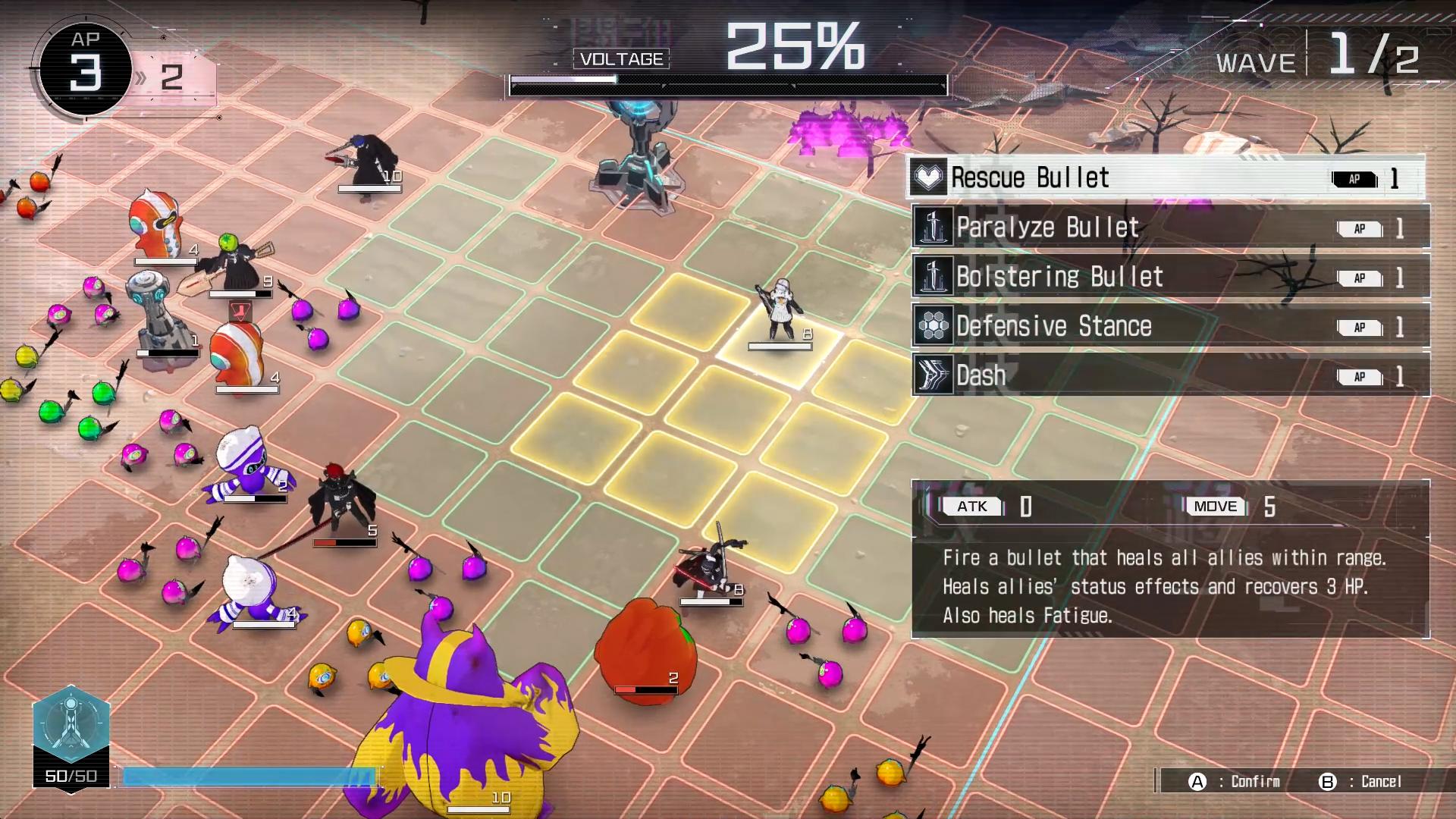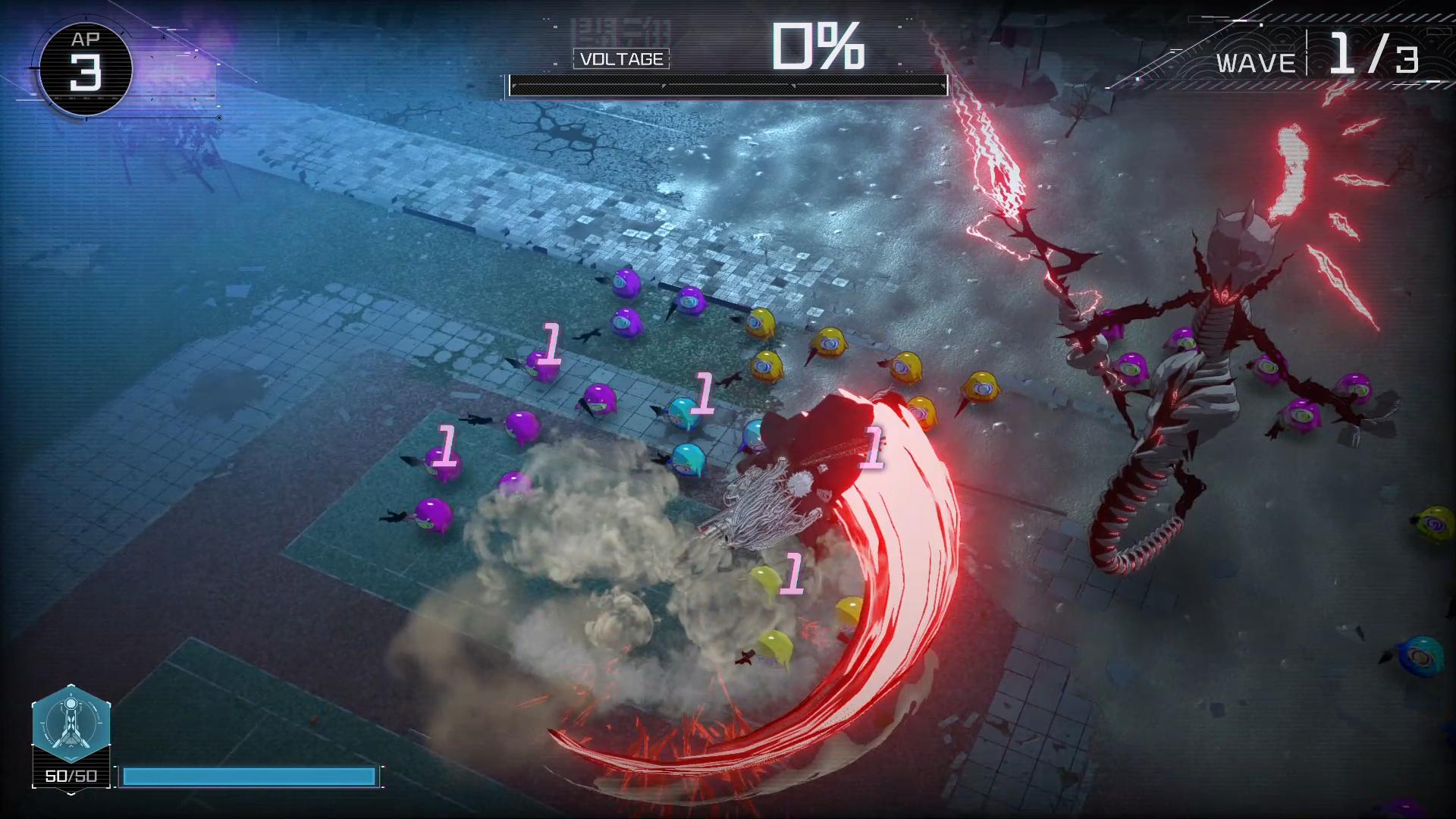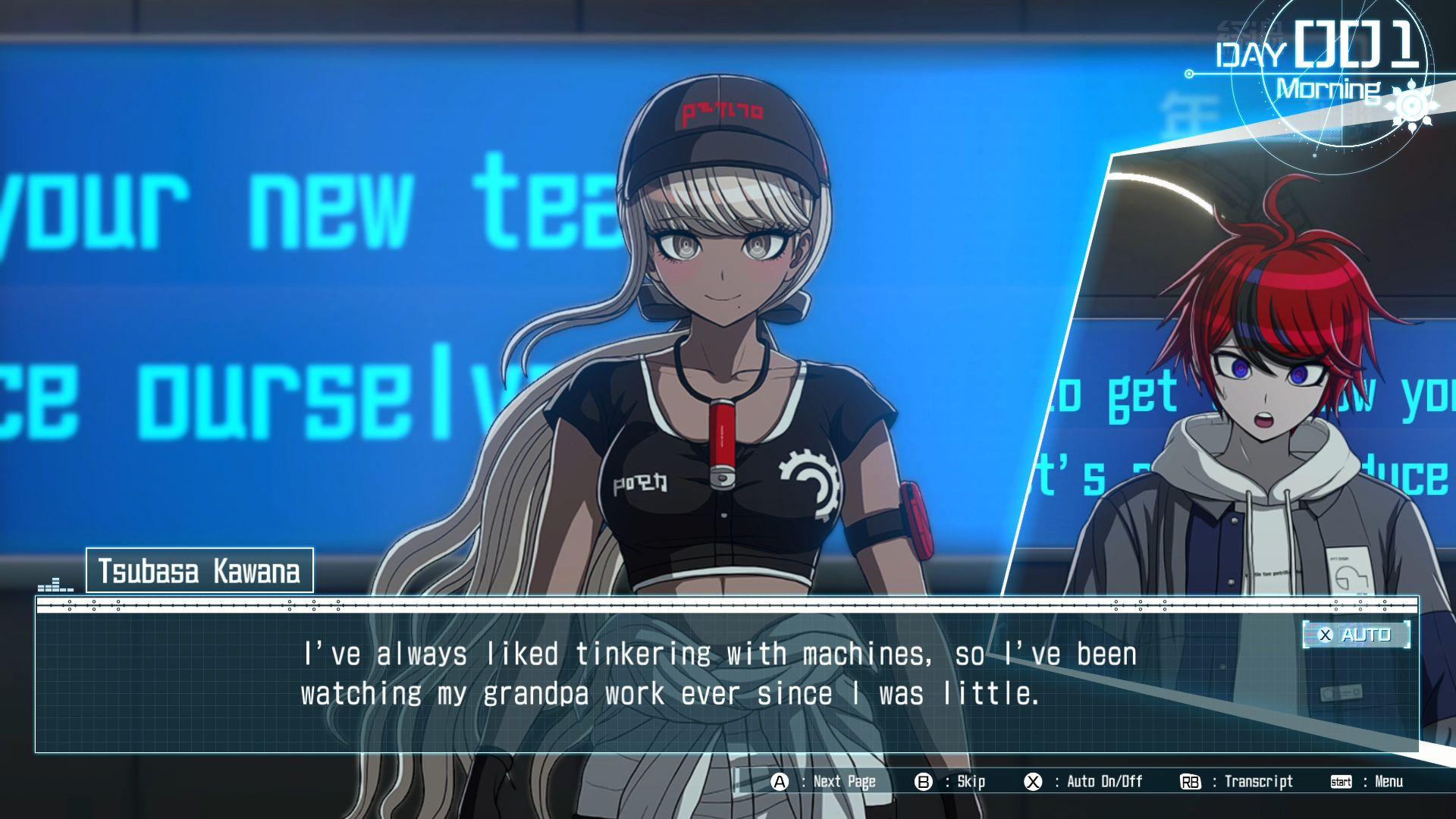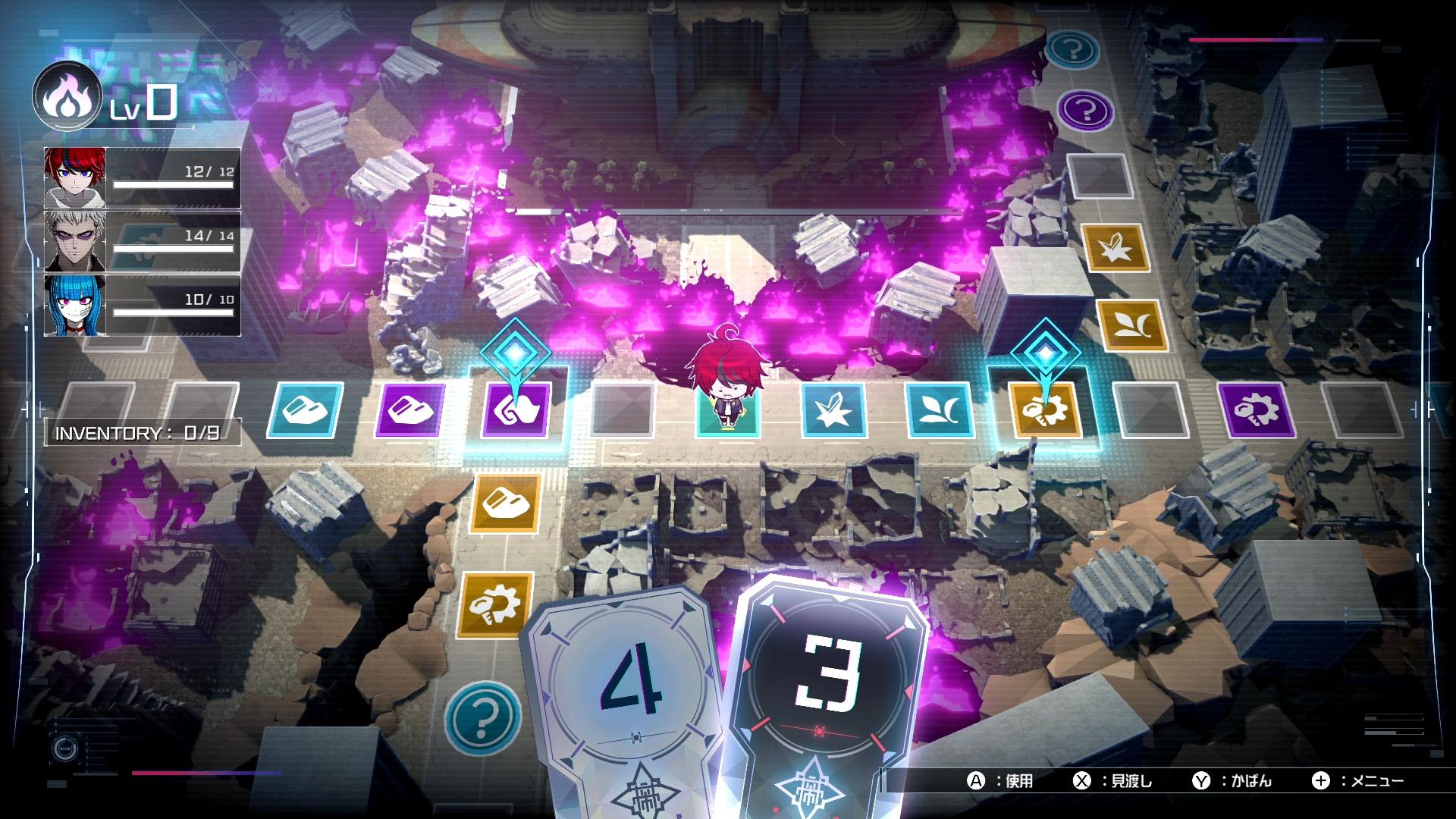
by
Evan Norris
, posted 10 hours ago / 549 Views
You know the phrase “greater than the sum of its parts”? Perhaps no game exemplifies that idea better than The Hundred Line: Last Defense Academy, a new genre hybrid from Too Kyo Games and Media.Vision. The ambitious title incorporates multiple video game elements that don’t typically go together: visual novel progression, turn-based tactical battles, exploration & resource-gathering, and relationship management. On paper, this genre mash-up seems messy and clumsy, but in reality it’s anything but.
Last Defense Academy begins with Takumi Sumino, an average teenager living in the Tokyo Residential Complex, an urban sprawl of safety, comfort, and reliability that also, unnervingly, has a ceiling. Takumi’s everyday, normal life turns upside down one day when freakish monsters attack, wreaking havoc and killing the the TRC’s citizens. A strange impish creature named Sirei suddenly shows up and recruits the callow teen to fight back. The next thing he knows, Takumi is in Last Defense Academy, a massive school in the middle of nowhere surrounded by a wall of undying flames. He and 14 other students have been drafted unceremoniously into the Special Defense Unit, a team tasked with keeping the school safe from monsters for the next 100 days. Will they survive that long?
Written by two masters of visual novel storytelling, Kazutaka Kodaka and Kotaro Uchikoshi, Last Defense Academy features one of the most riveting, disturbing, mind-shattering stories you’ll experience all year. Kodaka, most famous for Danganronpa and recent murder mysteries like Master Detective Archives, and Uchikoshi, beloved for his Zero Escape series and earlier visual novels like Ever 17, bring their absolute best to this game. There are memorable characters, heady science-fiction ideas, deadly scenarios, and twists and turns galore. Indeed, even when you see the credits roll, many more narrative pathways remain. In a way, this is where the true Last Defense Academy starts.
The contributions from Kodaka and Uchikoshi are a big part of Last Defense Academy — the biggest part, really — but only one piece of what makes it special. Another major component is its turn-based tactical combat. You see, every student at the academy has access to Hemoanima, a type of mutated blood that grants them supernatural abilities. When monsters attack the school, the teens activate the Hemoanima, transform, and leap into battle.

Each battle takes place on a grid outside the academy. Typically these are defensive battles, where your troops must protect one or more barrier generators from the invaders. The basic controls are simple. You choose your character, move them to a space highlighted in green, and then take an action. At first, you’ll mostly use offensive skills, which consume AP. After using a skill, that character will become fatigued, after which they can only move a single space, so you’ll have to strategize accordingly (don’t worry, fatigue and AP are restored at the next turn). As you attack enemies, you’ll begin to accumulate Voltage. This is where the tactical gameplay starts to get interesting.
When your Voltage reaches 100% or more, you gain access to some important things. First, you can boost your Hemoanima, which will power up your troops in a variety of ways and will, importantly, remain in effect for the entirety of the battle. You can also use special attacks — super powerful, wide-reaching assaults that can wipe out entire enemy platoons at once. Careful, though: while these special attacks don’t waste AP, they stun the user, taking them out of the fight moving forward. Knowing when to attack, when to retreat, and when and where to take advantage of Voltage is essential to success. Heck, sometimes it’s more wise not to use your accumulated Voltage. One of your classmates, Gaku, has a passive skill that grants him +1 to attack when the Voltage meter is above 100%.

Speaking of your classmates, they add a lot of variety and strategic nuance to each battle. Each one comes with their own strengths, abilities, and passive skills, not to mention a character-specific Class Weapon that reflects their personality. Darumi, for example, is a mid-range support specialist whose attacks gain a lot of voltage. Eito is an offensive specialist who gains a random buff with each action. One of the most interesting and useful classmates is Kurara, a defender focused on base defense. She can use Craft to make devices like turrets that operate automatically each turn.
Overall, the strategic battles in Last Defense Academy make a big difference. Without them, the adventure would simply be too automated. You already spend a lot of time in the game scrolling through dialogue and passively listening to conversations — in fact, if you turn on the auto functionality, you can experience a good chunk of the game without even pressing a button — so it’s important to have a tactical, tactile element in the mix.

The existence of battles also necessitates other engaging elements of Last Defense Academy, which pull from different genres. When you’re not absorbing exposition or slaying monsters, you’ll experience Free Time in the halls of the academy. You’ll have Free Time twice a day, once in the morning and once in the afternoon, during which you can upgrade your Class Weapons and get to know your comrades via Student Activities, which will raise your grades. Takumi is graded in five subjects — linguistics, math, science, social studies, and gym — and all subjects will be needed in different scenarios. You can also raise your grades by reading books related to the subject, or by crafting and giving gifts to classmates.
You’ll need materials and BP to craft gifts, which you can obtain by exploring outside the school. In the morning, during Free Time, you can select a maximum of three friends, then leave the academy and visit the destroyed world outside. Here, the game transforms into a sort of board game map, with tiles indicating resource types and monsters. Select a Step Card from your hand and move the corresponding number of spaces. Each tile has a premise, and you must make a decision, choose-your-own-adventure-style.

Now, some of these elements are a touch underdeveloped, especially in comparison to the narrative, but together they form an interesting, engaging tapestry of different mechanics and encounters. Outside of scripted events, there are many opportunities to make each day your own.
And those days will add up. You’ll need approximately 30 hours to witness them all, at least at first. After that first playthrough, however, there’s much more to see. You should pencil in 150+ hours if you want to see every single ending and witness the true conclusion to the story. As a result, Last Defense Academy is a substantial game, and one absolutely worthy of the heavy time investment. Kodaka and Uchikoshi have reconfirmed their status as living legends with this one.
They’re not the only masters at work here, though. Character Designer Rui Komatsuzaki delivers some wildly original, unforgettable character designs with extraordinary costumes and big personalities. Kurara, with her giant green tomato mask, is a highlight. Audio Director Masafumi Takada (No More Heroes, Earth Defense Force 6, Danganronpa) provides an eclectic, atmospheric soundtrack that excels at setting the mood, whether mysterious, playful, or menacing. The mellow “At Midnight”, for instance, is perfect for slowing down after a long day of training and socializing.

While the game’s art direction is excellent, its actual graphical assets are fairly humble. Still, despite some simple textures and the rare low-res image, there’s nothing really deficient here. The art style, character designs, and general ambiance go a long way in papering over any technological cracks.
Last Defense Academy has a lot of disparate parts working simultaneously, but it never creates any sort of disharmony. If anything, the visual novel, turn-based strategy, resource collection, and relationship management aspects complement and reinforce each other, creating a product far greater than the sum of its parts. Yes, it’s true that everything, ultimately, serves the narrative, which sometimes goes on auto-pilot, but with such strong storytelling and with so many unexpected twists, it’s hard to complain. If you’re a visual novel skeptic, worry not; there’s a lot here to sink your teeth into, mechanically. And if you’re a visual novel fan, what are you doing still reading this review? Go get the game already.
VGChartz Verdict
This review is based on a digital copy of The Hundred Line: Last Defense Academy for the NS, provided by the publisher.Read more about our Review Methodology here
More Articles

